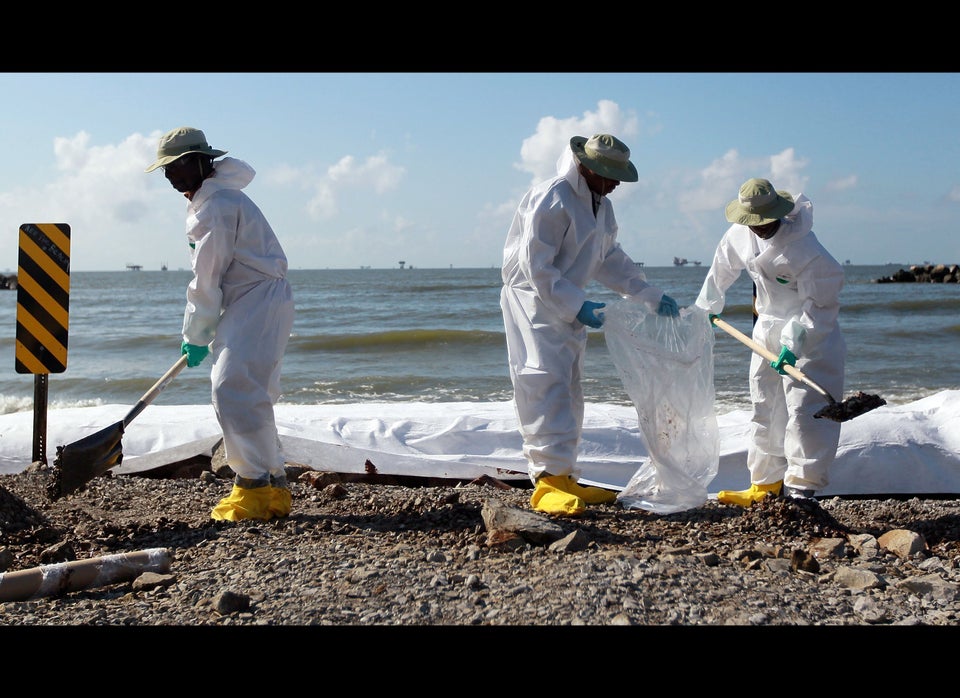
By Kathy Finn
NEW ORLEANS, Oct 1 (Reuters) - Dithering and indecision at BP Plc delayed the capping of its Macondo well and worsened the extent of the 2010 Gulf of Mexico oil spill, according to allegations by plaintiffs' lawyers at trial on Tuesday that the British company denied.
On day two of the second phase of a trial in New Orleans over billions of dollars in potential fines, witnesses said they were surprised when BP abandoned one proposed method of plugging the well, which would have put a new blowout preventer on top of a similar device.
"It was BP's decision," said Robert Turlak, an engineer from Transocean Ltd who worked on the well-capping team. "We were so close, we'd come a long way ... We had the equipment ready."
It eventually took 87 days to plug the well as a series of different capping methods were tried. By then, millions of barrels of oil had escaped into the sea and fouled coastlines in the worst offshore spill in U.S. history.
BP lawyer Paul Collier fended off allegations of indecisiveness, saying the company carefully assessed hazards and discussed how to mitigate risks associated with numerous plugging options.
He also said BP's well-capping team had a mantra of "don't make things worse."
Lawyers for the plaintiffs - which include people affected by the spill, the U.S. government and Gulf states, and former contractors Transocean and Halliburton Co - have sought to show that BP's estimates on the size of the leak were unsubstantiated and complicated its efforts to cap the well.
At one point after the April 2010 spill, BP touted the chances of stopping with leak with a so-called top kill that pumped heavyweight drilling mud into the well. But that did not work - frustrating U.S. officials at the time.
"I believed the words (BP Senior Vice President) Kent Wells used, that this is a slam dunk," former U.S. Energy Secretary Steven Chu said in a videotaped deposition played in court on Monday about the top kill. After that, "we began to be much more critical about what BP planned to do," Chu said.
Eventually, a "capping stack" that took weeks to build was used to shut the well. Capping stacks have since become crucial pieces of equipment standing by for emergencies in the Gulf.
BP has insisted its response after the blowout that killed 11 men was fully consistent with U.S. standards and that it never misrepresented the amount of oil spewing from the well.
SIZE OF SPILL IN FOCUS
The second phase of the trial in U.S. District Court in New Orleans, expected to last a month, covers how much oil spewed from the well and whether efforts to stop it were adequate.
Internal company emails presented at the trial on Monday showed BP saying publicly after the spill that 5,000 barrels of oil a day were leaking into the ocean when it knew up to 100,000 barrels a day could have been leaking.
In the costliest scenario the fines under the Clean Water Act could reach nearly $18 billion - an amount beyond the $42 billion BP has set aside for clean-up, compensation and damages.
The first phase of the trial, which wrapped up in April, looked at dividing blame among BP and its contractors; Transocean owned the drilling rig and Halliburton did cement work on the well.
The U.S. government says 4.9 million barrels were spilled, while BP says 3.26 million barrels leaked. Both those totals include 810,000 barrels that were collected during clean-up that the judge has agreed to exclude.
HIGHER PROVISIONS?
BP shares have lost a third of their value since the disaster, partly because of uncertainty over future fines.
The company has shed about $39 billion in assets to cover most of its provisions, but damages could rise.
Under the Clean Water Act, negligence can be punished with a maximum fine of $1,100 for each barrel of oil spilled; a gross negligence verdict carries a potential $4,300 per barrel fine.
If the court judged the spill to have been 4.09 million barrels - the government estimate less oil recovered - the price of negligence could reach $4.5 billion. Gross negligence could run to $17.6 billion.
Moody's Investors Service said on Tuesday that BP's credit ratings could tolerate a moderate penalty under the Clean Water Act but warned that "a severe penalty resulting from a finding of gross negligence could change the equation."
Judge Carl Barbier has said he will not assign penalties for BP until the third phase of the trial, expected early next year.
The case is In re: Oil Spill by the Oil Rig "Deepwater Horizon" in the Gulf of Mexico, on April 20, 2010, U.S. District Court, Eastern District of Louisiana, No. 10-md-02179.

